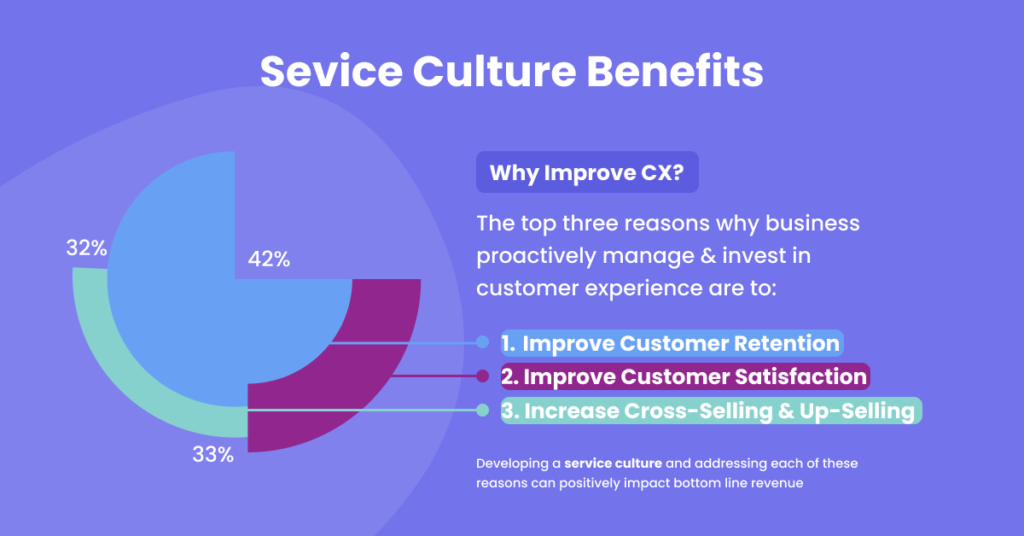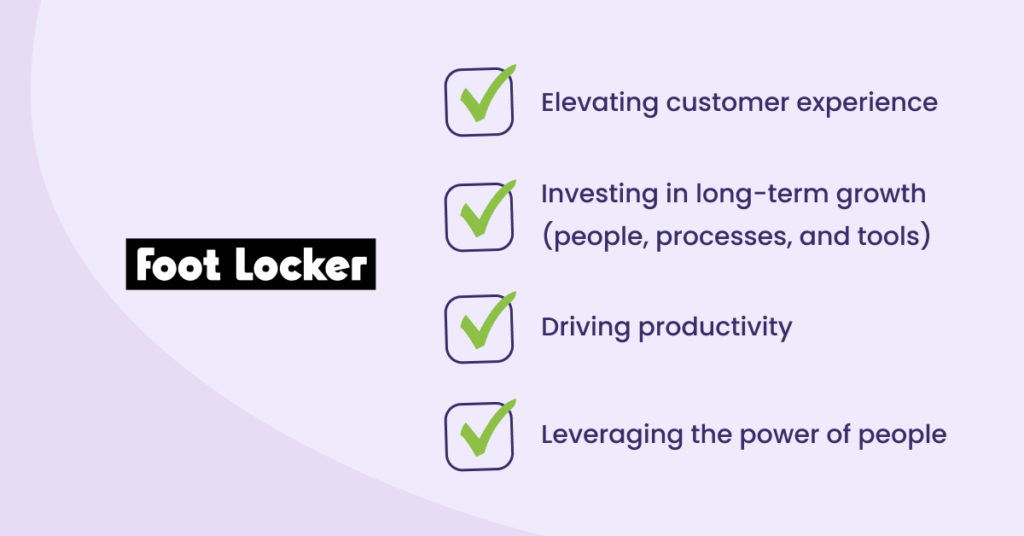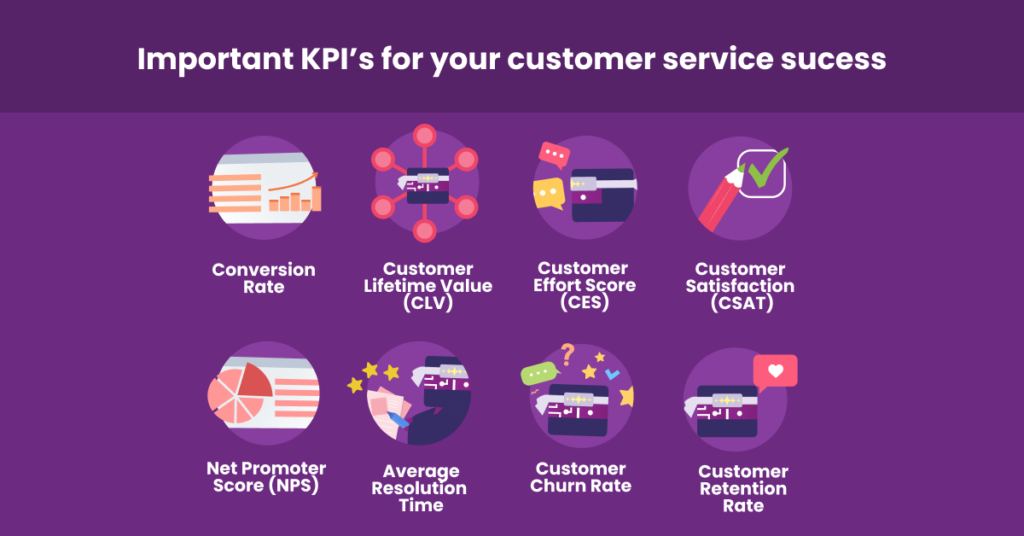It’s no secret that customer service is evolving. With the advent of new technologies, customers now expect more from the companies they do business with.
There is also solid proof that companies building a customer service culture are 60% more profitable than the ones that aren’t.
Customers want their concerns and questions answered quickly. They are after personalized experiences that consider their past interactions with the company. But, what is service culture to start with?
Here’s our beginner-friendly guide into customer service culture and what companies need to do to stay ahead of the curve when creating a customer service culture.
What is service culture?
The term “service culture” has been bandied about a lot in recent years, but what does it actually mean?
At its core, service culture is all about creating an environment where exceptional customer service is not just a goal, but a fundamental part of the company’s values and operations. It’s about prioritizing the needs and experiences of your customers at every level of your organization, from the front-line employees to the C-suite executives.
A service culture is a culture or environment in which the customer is always the top priority, one where you put the customer first. But it certainly doesn’t mean that the customer is always right. Or that you should always sacrifice the interests of your agents for those of the (unreasonable) customer.
In fact, customer service culture is a systemized and planned obsession with providing the best customer service experiences.
It means going above and beyond expectations to ensure clients are delighted by your organization’s goods or the services they’ve paid for; it also helps set the company apart in today’s crowded marketplace.
Every interaction with a customer should be an opportunity to deliver exceptional service, demonstrate your customer service culture, and build a strong customer-brand relationship.
Having a strong service culture means that your company is committed to delivering not only high-quality products or services, but also a consistently positive and memorable customer experience. This includes everything from the way you greet and interact with customers, to the processes and systems you have in place to resolve issues and address feedback.
But service culture is more than just a set of guidelines or best practices. It’s a mindset that should permeate every aspect of your organization, shaping the way you approach problem-solving, innovation, and decision-making. It requires a long-term commitment to building a culture that prioritizes customer satisfaction and empowers employees to deliver exceptional service.
Ultimately, service culture is about creating loyal customers who not only return to your business, but also advocate for it to others. It’s about building a reputation for excellence that sets your company apart from the competition and inspires trust and loyalty in your customers.
What are the benefits of a strong customer service culture?

RSU — Retention. Satisfaction. Upselling — all of these come as a reward for a strong customer service culture and stellar customer experiences.
McKinsey found that 70% of customer experiences are determined by the way the customer feels they are being treated. Your service culture or lack thereof has a causal relationship with customer experiences and them becoming a brand advocates later on.
There are actually many benefits to having a strong service culture in your organization.
Perhaps the most obvious is that it can increase customer satisfaction and loyalty.
But a strong customer service culture is more than just a nice way to do business. It’s a tool that lets you build an audience of loyal, happy customers. People who will tell their friends about your business, and who will rave about it online (Net Promoter Score).
A service culture can also improve employee morale and agent motivation, leading to increased efficiency and productivity.
Let’s look at some of the benefits of that service culture definition in more detail:
Increased customer satisfaction
When customer service is a top priority, customers are more likely to feel valued and supported. This can lead to higher levels of customer satisfaction, which in turn can lead to increased loyalty and repeat business.
Improved brand reputation
A company that consistently delivers exceptional customer service can build a reputation for excellence and differentiate itself from competitors. Positive reviews and word-of-mouth recommendations can help to increase brand recognition and attract new customers.
Higher employee engagement
When employees are empowered to provide exceptional service and are recognized for their efforts, they are more likely to be engaged and motivated in their work. This can lead to higher productivity in your customer service team, lower turnover rates, and a more positive workplace culture.
Better problem resolution
When customer service is a priority, companies are more likely to have effective processes in place for addressing customer issues and complaints. This can lead to quicker and more satisfactory resolutions, which can in turn improve customer retention and loyalty.
Increased revenue
Companies with strong customer service cultures often see increased revenue, as satisfied customers are more likely to make repeat purchases and recommend the business to others. Additionally, by providing exceptional service, companies can often charge premium prices and gain a competitive advantage in their market.
What is a customer service culture example?
One company that sets some service culture examples with a solid culture is Zappos.
This online retailer is known for its great customer service. It has built a loyal following, which resulted in 75% of their business revenue coming from repeat customers.

Zappos has been a case study for the customer service industry for years now. The results come from great company strategy and no reservations related to creating a service culture.
A great example of how daring Zappos has been on their strategy is their core values:
- Deliver ‘wow’ through service.
- Embrace and drive change.
- Create fun and a little weirdness.
- Be adventurous, creative, and open-minded.
- Pursue growth and learning.
- Build open and honest relationships with communication.
- Build a positive team and family spirit.
- Do more with less.
- Be passionate and determined.
- Be humble.
Zappos has done such a great job and achieved remarkable results that even giants like Amazon have learnt a thing or two from them. This enterprise and many others only proves that the way you define service culture and later design it into a strategy can be detrimental to business success.
What’s the customer service culture of tomorrow?
So what is the customer culture of the future?
The service culture of tomorrow is all about delivering personalized experiences to customers.

People want their concerns and questions answered quickly. They also want a personalized experience that takes into account their past interactions and personal tastes with the company. This is where data-driven customer service comes in and a customer intelligence department comes handy.
Data-driven customer service is a process in which you gather and analyze customer data to improve the customer experience.
The data you collect from the customers can come from a variety of sources, including surveys, social media, and customer support channels.
By analyzing CX data, businesses can gain a better understanding of what customers want and need. And they can use this information to personalize their interactions.
The benefits of data-driven customer service are clear. By collecting and analyzing customer data, businesses can improve customer experience and increase customer satisfaction. In addition, businesses can use this data to make decisions about product development and marketing strategies that can support building a service culture.
There are many companies that are already using data-driven customer service to improve their businesses. Amazon, for example, uses big data to improve customer experience. The online retailer collects data from a variety of sources, including its website, mobile app, and Amazon Echo device.
Amazon collected data is used to personalize the shopping experience for customers and to make recommendations about products they might be interested in.
As consumer behavior continues to change, businesses will need to increasingly rely on data-driven customer service in order to stay ahead of the curve and on AI — to analyze the massive amount of information it brings.
By collecting and analyzing customer data with tools, businesses can gain a better understanding of what customers want and need. And they can use this information to personalize their interactions with customers — easy!
Building a service culture: 9 main steps

But what are some of the key elements that make up a service culture? Here we made a handy list for you!
Hire the right people
Hiring individuals with the right mix of skills, empathy, and a desire to help others is critical.
You always want to have the right people in place — people who care about service if you want to create a strong service company culture. These individuals will be responsible for delivering exceptional customer service and building relationships with customers. And, what’s most important, they will actually be interested in achieving success in customer service.
Your agents need to be able to empathize with customers and understand their needs. So always make sure they are motivated to go the extra mile for their customers — which you can do by building a system of rewards, establishing a strong customer service culture from day one, and providing them with a healthy workplace environment where they can thrive.
Building a strong service culture starts with hiring the right people. Look for candidates who have a natural passion for delivering exceptional service, as well as the skills and experience needed for the job. During the hiring process, evaluate candidates not only for their technical abilities, but also for their attitude, values, and cultural fit. By hiring people who share your commitment to service excellence, you can build a team that is motivated, engaged, and focused on delivering exceptional experiences to your customers.
According to a survey by Harvard Business Review, 82% of companies with high-performing customer service teams hire for attitude rather than skill. This suggests that hiring people with the right attitude and values is more important than just technical skills or experience.
Establish strong company values
A survey by Gallup found that employees who feel that their values are aligned with their company are 27% more likely to report “excellent” performance. This suggests that clearly defining and communicating your company values can have a positive impact on employee engagement and performance.
One of the most important things you can do to create a good customer service culture is to teach your employees about your company’s values and how they can help customers. That way you will ensure that everyone is on the same page, gets all the protocols of conduct, and knows what you expect of them.
Clearly define your company values and make sure they align with your vision for service excellence. Your values should not be just a set of words on a page, but a guiding principle that drives every aspect of your business. Make sure you communicate your values to all employees, and incorporate them into your training, coaching, and recognition programs.
Agents need to understand the importance of providing excellent customer service and be motivated to go the extra mile for their customers to create a customer culture and demonstrate proactive behavior.
When everyone is working towards the same goal, it can lead to improved morale and productivity.
For example, Foot Locker, an international fashion retailer, have build their brand, name, and success strategy by relying on four core goals:

Read more: How Foot Locker Europe cut Resolution Time by 75% with Kaizo
Develop a customer experience vision
How can you provide something that you don’t understand?
Develop a clear and compelling vision for the customer experience you want to deliver. This should be a long-term goal that inspires and motivates your team. Your vision should be aligned with your company values and should be supported by a set of specific goals and metrics that you can track and measure.
Businesses must ensure their agents know what the customer’s experience should be like, what they want customers to associate the brand with.
According to a report by Forrester, customer experience leaders outperform customer experience laggards in revenue growth by more than five times. This highlights the importance of having a clear and compelling vision for the customer experience you want to deliver, as it can directly impact business outcomes.
By ensuring your teams know what the customer’s experience should be like, you are setting the standard for how they should be treated. This standard can focus on many things like tone of voice, refund policies, modes of communication, etc.
You are also ensuring that employees clearly understand what you expect from them. Having clear goals and KPIs can lead to improved morale, productivity, and more satisfied customers.
Here are some of the KPIs you should always be looking at:

Coach agents on new customer service technologies
With the rise of new technologies, customer service will increasingly be delivered through automated channels like self-service chatbots, for example.
Businesses provide training to their employees to use these AI technologies to help customers solve most common requests automatically as they focus on more complex cases.
Train your team on the latest customer service technologies and tools, such as chatbots, self-service portals, and artificial intelligence. Make sure your team understands how to use these tools to provide more efficient and effective service, while also maintaining a personal touch. Provide ongoing training and coaching to keep your team up-to-date and engaged.
A survey by Aspect Software found that 89% of customers prefer to use self-service channels, such as chatbots or self-service portals, to find answers to their questions. This highlights the importance of training your team on the latest customer service technologies and tools to provide quick and easy answers.
Good training and coaching will ensure customer service representatives can efficiently and effectively resolve customer concerns at any hour of the day.
In addition, training your employees on new technologies can help improve morale and productivity, as they will be able to use these technologies to their full potential. By training your employees on how to use new technologies, you are ensuring they can provide the best possible customer service.
Create a rewards system
When employees go above and beyond to help a customer, it’s important to reward them. This shows your appreciation for their hard work and dedication.
Develop a rewards system that recognizes and celebrates employees who deliver exceptional service. This can include bonuses, promotions, public recognition, or other incentives that align with your company values. Make sure your rewards system is transparent and fair, and that it motivates your team members to go above and beyond for your customers.
According to a study by the Incentive Research Foundation, companies with a formal employee recognition program have a 31% lower voluntary turnover rate. This suggests that developing a rewards system that recognizes and celebrates employees who deliver exceptional service can have a positive impact on employee retention.
Rewarding helps to motivate agents to continue providing excellent customer service.
A good rewarding system sets the standard for others in your organization, as they will see that you are willing to invest in those who deliver exceptional customer service.
You are also motivating them to continue providing excellent customer service. This can lead to improved morale and productivity within your organization, as well as more satisfied customers.
Here are some rewards ideas you could easily implement.

Provide regular feedback
Regular communication is key to creating a strong service culture. It allows you to keep employees updated on changes within the company, new policies or procedures, and goals for the department or team.
It also gives employees a chance to provide feedback and suggest improvements for the product or service you are selling. Feedback can also help identify areas where your agents need more training or guidance, and it can help you track progress over time.
By communicating with your employees regularly, you are reinforcing your commitment to providing excellent customer service. You are also giving employees a voice and letting them know their opinions matter.
A survey by Gallup found that employees who receive regular feedback and recognition are three times more likely to feel engaged at work. This highlights the importance of providing ongoing feedback to your team to keep them motivated and engaged in their work.
Foster a culture of continuous improvement
Building a strong service culture requires an ongoing commitment to improvement. Encourage your team to constantly seek out ways to improve the customer experience, whether it’s through new technologies, training programs, or process improvements. Make sure you are regularly collecting feedback from customers and employees, and use this feedback to identify areas for improvement and make data-driven decisions.
Providing regular training and development opportunities to your customer service team can help them stay up-to-date with the latest trends and technologies in the industry, as well as improve their problem-solving and communication skills. Encourage your team to take ownership of their own learning and development, and create a supportive environment where they feel comfortable asking for help or feedback. This can lead to a more engaged and motivated team, and ultimately, a better customer experience.
Empower your employees
To deliver exceptional service, your employees need to feel empowered to make decisions and take action. This means providing them with the tools, training, and support they need to do their jobs effectively. It also means creating a culture where employees are encouraged to take ownership of their work and are recognized for their contributions.
Empowering your customer service team means giving them the tools and authority they need to effectively serve customers. This can include things like access to information and resources, decision-making power, and the ability to escalate issues when necessary. By empowering your team, you can help them feel more invested in their work and confident in their ability to make a positive impact on the customer experience. This can lead to higher job satisfaction, lower turnover, and ultimately, a stronger customer service culture.
Lead by example
Building a strong service culture starts at the top. Leaders need to model the behaviors and values that they expect from their employees. This means prioritizing the customer experience, providing regular feedback and coaching, and creating a culture of continuous improvement. It also means fostering a culture of open communication, where employees feel comfortable sharing their ideas, concerns, and feedback. When leaders prioritize the customer experience and model the values of a strong service culture, they can inspire their team to do the same.
As a leader in your organization, your actions and attitudes can have a big impact on your team’s behavior and mindset. By consistently modeling the values and behaviors you want to see in your team, you can help create a positive and productive culture of customer service. This means being approachable, communicative, and supportive of your team, as well as demonstrating a customer-centric approach in your own interactions. By setting the tone for the rest of the organization, you can help create a customer service culture that is built to last.
Wrapping up
The customer service culture of the future is one of empowerment, not obligation.
It is a culture that values experiential service and experiences valued by customers, instead of valuing the same standard or “traditional” experiences that have been forced upon us through advertising.
It is a culture where service providers are not afraid to offer their opinions and suggestions, where they are not afraid to be original, whether it be in the form of their ideas for service-oriented products or in the way that they deliver their services.
Are you ready to embrace it?



